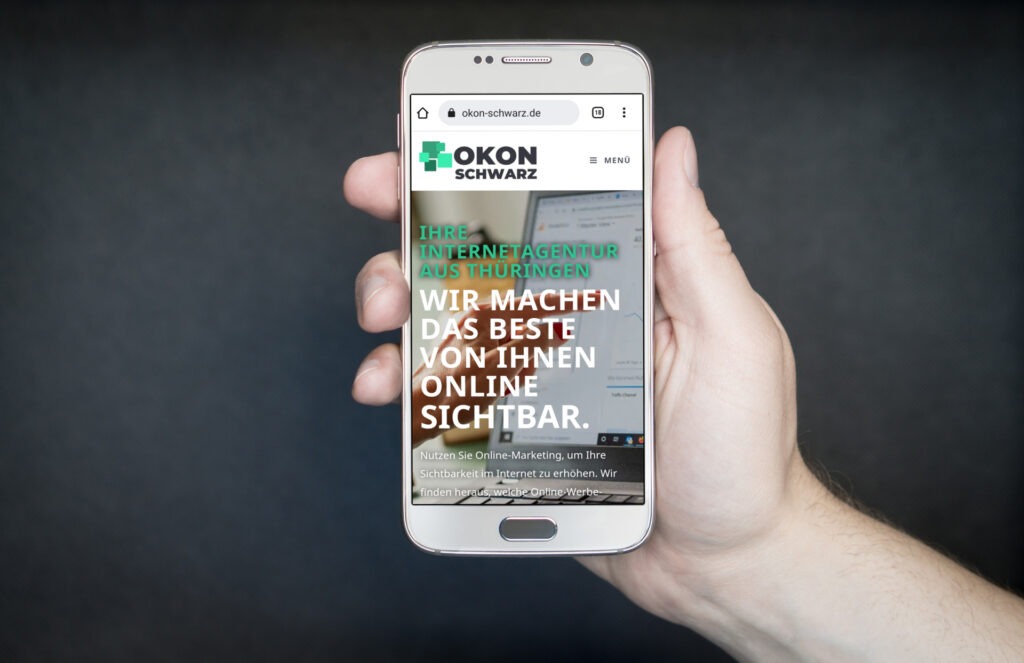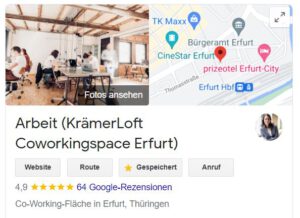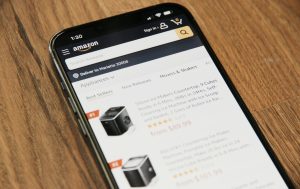Mobile Friendliness has been an Official Ranking Factor at Google since 2015
Mobile friendliness describes the usability of a website on smartphones. Google’s search engine has been ranking websites solely based on their mobile appearance since 2021. Therefore, it is advantageous for you as a website operator to engage in mobile search engine optimization (Mobile Only SEO) and to adjust or potentially only check the mobile-friendly state of your website. In this article, we show you SEO measures for better search engine rankings that apply in times of Mobile SEO. You will also find tools in this post to check your mobile performance.
These questions will be answered:
- How does the Mobile-Only index affect crawling and indexing?
- How does Google’s Mobile-Only index affect my ranking?
- Have the Google ranking factors changed due to the introduction?
- What impact do structured data have on the Mobile-Only index?
- What measures improve mobile websites?
- Do websites need specific mobile content?
- What measures improve mobile loading times?
- What factors improve Local SEO?
- Do Accelerated Mobile Pages (AMP) improve Google ranking?
- What should be considered in the linking structure?
- To what extent must meta tags be optimized for mobile?
- Must canonical tags be optimized for mobile?
- Which tools help with verification?

1. How Does the Mobile-Only Index Affect Crawling and Indexing?
The Mobile-First index means that Google primarily reads websites in their mobile version when they are included in search results. The innovation here is that from now on, instead of the desktop version, the mobile website version will be crawled. Since March 2021, Google has switched from the Mobile-First to the Mobile-Only index.
The number of URLs crawled per day remains essentially the same. The change lies more in the shift in the ratio between mobile URLs and desktop URLs. Previously, predominantly desktop URLs were crawled, whereas in the future, the number of crawls by mobile crawlers will increase significantly. Consequently, Mobile First and Mobile Friendliness also have implications for SEO. For indexing in the Search Engine Result Pages (SERPs), Google relies on the mobile version of your website. The SERPs list the search results of a search query by users in a search engine, such as Google or Bing. Today, the mobile index is the primary index. Google has switched to the Mobile First index because the majority of users now access websites via mobile devices, making mobile usability essential.
2. How Does Google's Mobile-Only Index Influence Ranking?
Nowadays, your ranking depends on how well your website is optimized for mobile devices. Since the content of the mobile website is indexed and used for ranking evaluation, it means that your mobile website should be sufficiently user-friendly and compliantly implemented, or else you may rank lower.
The ranking of websites is determined and displayed in descending order based on the relevance of the results. Your entire website’s ranking drops if the crawler downloads reduced and unoptimized content from your mobile website. If a website has different URLs for desktop and mobile, mobile users will simply see the mobile URL and desktop users will see the desktop URL. However, the indexed content for both comes from the mobile website version.
3. Have the Google Ranking Factors Changed?
Google has further reinforced the impact of Mobile First since Mobile Friendliness became a ranking factor in 2016. Essentially, the Google ranking factors for websites have not fundamentally changed.
The same criteria still matter:
- Content
- Links
- General user accessibility
Mobile SEO differs from traditional SEO in that now the criteria are assessed for the mobile version. Since Mobile First, the focus has been on mobile readability, mobile usability/functionality, and the use of structured data.
Meaningful internal links should help users reach their goals quickly and easily without relying heavily on site navigation.
On mobile devices, results matter in seconds, so your website’s load time should be as minimal as possible. Since the screen is much smaller than a desktop, clear summaries are essential. All of these factors serve mobile users and thus your potential customers, making it worthwhile for you to optimize them.
4. What Impact Do Structured Data Have on the Mobile-Only Index?
Structured data is a standardized format for providing information about a website. They classify the content on the website, primarily serving search engines but also users to better understand what the website is about. If search engines do not recognize the content of your website, your website may not be listed for relevant search queries. Therefore, your website should have structured data optimized for the mobile version.
The Rich Results Test tool is a Google tool that allows you to check your structured data and, in some cases, also preview a feature in Google Search.
5. What Measures Improve Mobile Websites?
Page templates are PHP files used to design individual pages of a website. Some of these programmed page templates for content management systems (CMS) are not completely responsive. The CMS is software that enables the provision, editing, organization, and presentation of digital content.
In the context of mobile optimization, this means that you should always pay attention to which page templates are well adapted.
Images on your website …
should not be displayed in their original size or larger than the screen on mobile. This can be challenging not only for images but also for other content elements such as buttons. Therefore, we recommend checking important pages on your website in various screen resolutions to avoid issues with the correct display of the mobile version.
Closely spaced clickable elements …
can, for example, affect usability because the thumb is larger than the mouse pointer on a laptop or computer. Therefore, clickable elements such as buttons and links should never be placed too close together on mobile devices. Otherwise, you risk users being unable to click on elements accurately. If this happens, users may end up on websites they did not intend to visit. In the worst case scenario, you could lose a potential customer.
Readability …
is also a factor that supports usability. Texts for smartphones often have their font size automatically reduced to fit more text onto smaller screens. However, it’s important not to overdo it and to moderate the reduction, while also avoiding excessive horizontal and vertical scrolling. Rankings are now also dependent on the responsive design of websites. Google itself recommends using this dynamic design approach. To address usability issues on your website, it makes sense to analyse the Core Web Vitals report in Google Search Console for your own website.
Page layout …
it’s important, for example, that the page layout does not shift during the loading phase. The CLS (Cumulative Layout Shift) value indicates this. It is rated from 0 to 1, where 0 indicates no shifting and 1 indicates the strongest shifting. Because it’s not user-friendly if page elements move during interaction.
6. Do Websites Require Special Mobile Content?
In principle, Google prefers relevant content that is easily accessible by the Googlebot. Content can consist of various forms such as texts, images, videos, multimedia documents (documents with interactive material composed of different media), and other media formats. Mobile accessibility for the crawler is likely the most important aspect.
The Googlebot is a web crawler, a computer program that downloads content from the Internet (www) and then integrates it into search engines. Web crawlers also index websites or collect information such as email addresses. Therefore, it is of utmost importance that the Googlebot can easily read all important content.
In principle, responsive web design ensures that all content on your website is optimally displayed. However, you should also create mobile-friendly content. Your keywords are very important and should be optimized. Mobile users often search for specific information, so you should bundle your website content compactly. Headings should always be appealing and clearly convey what is being discussed on your website. If you have larger content on your website, summaries of the content in the introduction are a good method to confirm to users that they are on the right website in terms of content.
To avoid displaying your customers an excessively long block of text and potentially losing them, you should structure your texts well with subheadings. Subheadings have the effect of making the text appear much shorter to the user in individual sections than in a long block. This division makes your text more pleasant for your website visitors.
Key points to consider:
- Google values clearly understandable texts. Therefore, avoid nested sentences and complicated expressions.
- Images should be clearly recognizable and visually support the content.
- You should also know that content can be localized. Mobile content with a local reference can directly affect the behaviour of users in the real world, as online searches are often made for reviews or nearby stores.

7. What Measures Improve Mobile Loading Times?
For SEO in the Mobile-First Index, loading time is also a crucial influencing factor. Users value quickly accessing the desired website. Mobile loading time strongly influences whether users stay on a website or quickly leave it. In Mobile-First design, there are several measures that help reduce your site’s loading time.
Image compression
Various techniques enable data reduction (reducing the size of source data) of 20% to 50%. You can display images in special graphic formats for compressed images, such as Next Gen formats like WebP. Since high-resolution images and videos consume a lot of data volume when loading, you should only integrate the necessary ones into your website and choose an appropriate size.
Videos
Regarding videos, it’s important to note that they are only loaded when users click the play button. After all, the limited data volume of their mobile contracts plays a role for many users.
Designs
Elaborate designs with many scripts, complicated animated objects, effects, and style sheets harm your loading time, mobile performance, and ultimately your ranking.
In summary, successful websites score with factual content in a clear and organized structure.
8. What Factors Enhance Local SEO?

The use of smartphones significantly enhances local and location-dependent search. The location of users is a crucial factor in determining what appears in the SERPs for them. The importance of this is even greater for mobile search because users are more likely to see search results from their vicinity.
This factor is particularly important for businesses with a physical location and/or a specific service area. To gain an advantage here, you should, for example, set up Google My Business and ensure correct markup with Structured Data via Schema.org. Business listings can have a significant impact on your ranking if you enter and standardize the most important information there, including your website.
9. Do Accelerated Mobile Pages (AMP) Improve Google Ranking?
Accelerated Mobile Pages refer to an optimized website page format accessed exclusively via mobile devices. AMPs were designed to load mobile websites faster.
You may wonder if your ranking will improve with AMP. Google provides vague information on this topic and denies that AMP is a direct ranking factor. However, since mobile loading speed is a criterion in ranking, using AMP does not hurt, even though AMP requires high maintenance and upkeep. However, if users interact more on the fast-loading AMP compared to a slow-loading website, it could naturally improve your ranking position.
In the “Headlines” widget on your smartphone screen, both AMP and non-AMP results are displayed. Google continues to support AMP, but in the future, it will likely address the issue of loading time through the introduction of the new ranking factor “Page Experience.” In general, all websites in Google search are ranked according to the same principles, regardless of the technologies used to create the website.
10. What Should Be Considered in Linking Structure?
The key to any website, whether accessed on desktop or mobile devices, is a meaningful and purposeful internal linking structure. Users should be guided from their entry page to where you want them to go, which is usually completing a purchase or making a contact inquiry.
Internal linking aims to answer potential questions of users on the subsequent page while simultaneously convincing them of the product or service. Keep in mind that not all features of mobile devices can be transferred to desktop pages before setting up your desktop page completely like your mobile page.
Content recognized as collapsible navigation aids on smartphones, such as the “Burger menu,” may confuse desktop users. While the mobile page takes precedence, you should always check both websites in parallel to provide desktop visitors with a satisfactory website navigation experience as well.
11. To What Extent Should Meta Tags Be Optimized for Mobile?

Meta tags can be found in the head area of an HTML document. They are not obvious to website visitors and can help website owners convey information about their website to search engines. For example, they may contain information such as the content, publisher, author, and copyright. Most meta tags are automatically created by modern CMSs like WordPress.
You should use the same Meta Robots tags on the mobile site and desktop site. Otherwise, Google may not be able to crawl and index your site. Setting up meta viewport tags is also useful because they give the browser information and instructions about the size of the website.
A mobile optimization tip is to use Apple’s viewport meta tag for Safari iOS for responsive web design websites. Viewport is an attribute used to ensure the display of websites on mobile devices.
As a general rule, both versions of your website should contain the same metadata. These are so important for the SERPs (Search Engine Result Pages) because they are displayed as a search engine result for your website. There is debate that the optimal character count of your meta titles should be reduced from 50 to 70 and meta descriptions from 120 to 155 for mobile search results.
12. Do Canonical Tags Need to Be Optimized for Mobile?
Canonical tags are an effective tool in SEO for dealing with duplicate content. Technically, a canonical is a simple HTML element. It provides the ability to resolve issues arising from identical or duplicate content on multiple URLs.
For example, if you have similar content under different URLs, a canonical tag can specify which version should be considered the main version and indexed. Therefore, it is advantageous to adjust the canonical tags as they allow you to designate a canonical URL, determining which URL should be displayed in the search results.
When websites have multiple URLs that refer to the same webpage or have duplicate or very similar websites with different URLs to support multiple device types, canonical URLs are helpful. They increase keyword relevance for individual URLs, allowing search engines to extract the best from your website.
If you deliver your website in a specific mobile variant, starting with a mobile subdomain like https://m.exampledomain.com/page1.html, Google recommends using a “rel alternate” element on the desktop version that points to the mobile variant, and vice versa, using a canonical link on the mobile version to the desktop URL.
13. Which Tools Help With Verification?
To check or monitor your website’s mobile performance, there are many helpful tools available.
- Mobile Friendliness:
To assess the extent to which your website is optimized for mobile devices and complies with the Mobile Friendly standard, the Mobile-Friendly Test is useful. It provides specific information about the usability issues currently present on your mobile website version. To optimize the mobile display and usability of your pages, you should review the displayed errors and make adjustments as necessary.
- Loading Time & User Friendliness:
Using Google PageSpeed Insights, you can analyze the loading time of your website. To address usability issues with your website, it is advisable to analyze the Core Web Vitals report in the Google Search Console for your own website.
Ihre Ansprechpartner
With extensive experience in online marketing and internet business models, we develop online marketing strategies, implement them for you, and are happy to accompany you.
We identify which online marketing advertising channels are suitable for you and your business, implement targeted measures, and keep track of them for you. Our advertising agency from Erfurt, Thuringia, with a focus on online marketing, is happy to support you in optimizing your website.
Contact us now, and together we will work on improving your website ranking.





